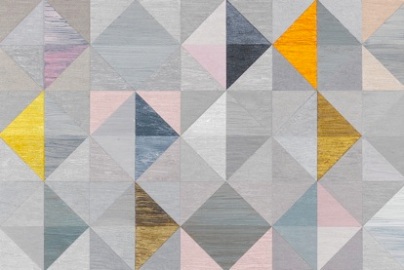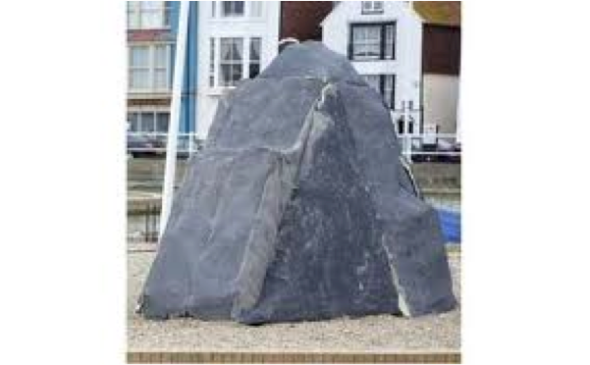Matthew and Emma gave a talk in Norwich to Paint Club East where they outlined their collaborative approach to working. Matthew is a well-known critic and painter, his partner Emma, is a ceramicist. The work they talked about was new work that was about to be exhibited at Vigo Gallery in London. What emerged during their talk was that they had developed a very process orientated approach to working which some artists in the audience found difficult to handle. Matthew revealed that he was, in relation to these works at least, little more than a technician or an automated drawing tool or paintbrush. Emma it appears decides what colours are used in what combination and the type of stroke or mark making that is needed.
Let me explain a bit more. The paintings are large-scale canvases divided into many geometric diamond shapes that are then further divided into triangles. Each triangle is a different colour, and the colours are built up using many layers of colour glaze before a final combination of colours is arrived at. The paintings appear to be multi-layered, as if the geometric diamond shapes are obscuring some thing else be it a landscape or seascape of some sort, the colours vibrate off each other in a successful overall vision which does not allow for straight geometric reading of the Diamond grid.
Biggs & Collings
The pictures are not unlike Bridget Riley’s, although to my mind they work better than Riley’s.
Biggs and Collings’ exhibition in London opened a few days after the Paint Club East talk. I went to the Private view at Vigo. The next day I went to see Bridget Riley paintings at Tate Britain to compare and contrast. I like the Bridget Reilly’s, but I prefer her collage mock ups to her finished paintings which I have previously seen at Kettles’ Yard in Cambridge.
Detail of Biggs and Collings’ work
I suppose the key issue for me with Biggs and Collings’ work is the one emerging around a collaborative practice. I found that their honesty in the way they talked about their collaborative work really refreshing. This was most evident when Matthew Collings talked about their sublimation of painterly or artistic ego. I found this both disturbing and intriguing and I would like to work collaboratively with more artists to explore its possibilities. It seems quite clear that there is enormous potential and I can’t fully know how I’d feel about it until I’ve done more. I have collaborated with the artist David Kefford at Aid and Abet on a tiny scale recently in Cambridge, or the limited outings I had whilst an undergraduate at NUA.
Bridget Riley




